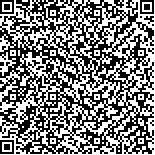李亚梅,张晶,黄林,田金艳,余茜.体外冲击波对脑卒中患者小腿三头肌痉挛的影响[J].中华物理医学与康复杂志,2018,40(4):272-277
扫码阅读全文

|
| 体外冲击波对脑卒中患者小腿三头肌痉挛的影响 |
| Extracorporeal shock wave therapy alleviates spasticity in the triceps surae after stroke |
| |
| DOI: |
| 中文关键词: 体外冲击波 小腿三头肌痉挛 电生理 H反射 脑卒中 |
| 英文关键词: Extracorporeal shock wave therapy Spasticity Triceps surae Electrophysiology H reflex Stroke |
| 基金项目:四川省医学会科研资助项目(Q14046) |
|
| 摘要点击次数: 8132 |
| 全文下载次数: 7965 |
| 中文摘要: |
| 目的 观察体外冲击波(ESWT)对脑卒中患者小腿三头肌痉挛的疗效及可能的电生理机制。 方法 选取脑卒中后偏瘫侧小腿三头肌痉挛的患者60例,按随机数字表法分为ESWT组和对照组各30例,2组均给予基础治疗和常规康复治疗,ESWT组在此基础上增加ESWT治疗(能量0.02mJ/mm2,压力1.5bar,频率8Hz,冲击次数2000次),对照组给以安慰治疗,均为每周1次,连续4周。于治疗前(t0)、疗程结束后即刻(t1)、治疗结束1周后(t2)、治疗结束4周后(t3)分别对2组患者进行踝关节综合痉挛量表(CSS)、关节被动活动度(PROM)、10米步行时间(10MWT)和神经电生理(H反射、Hmax/Mmax)评定。 结果 t1、t2、t3 3个时间点,2组患者的CSS评分较组内t0时间点均显著升高,差异均有统计学意义(P<0.01),且ESWT组在t1、t2 2个时间点的CSS评分均显著低于对照组同时间点,差异均有统计学意义(P<0.05)。t1、t2、t3 3个时间点,ESWT组的PROM较组内t0时间点均显著升高,差异均有统计学意义(P<0.01),对照组仅t1、t2 2个时间点的PROM高于组内t0时间点,差异均有统计学意义(P<0.01)。t1、t2、t3 3个时间点,2组患者的10MWT较组内t0时间点均显著降低,差异均有统计学意义(P<0.01),且ESWT组t1、t2、t3 3个时间点的10MWT均显著低于对照组同时间点,差异均有统计学意义(P<0.05)。t1时间点,ESWT组与组内t0时间点比较,H反射潜伏期延长,Hmax/Mmax下降,差异均有统计学意义(P<0.05)。2组组间比较,ESWT组仅H反射潜伏期在t1时间点与对照组同时间点差异有统计学意义(P<0.05)。 结论 ESWT可有效地改善脑卒中后小腿三头肌痉挛,且相对安全。 |
| 英文摘要: |
| Objective To evaluate the effect of applying extracorporeal shock wave therapy (ESWT) to alleviate triceps surae spasticity after a stroke and to explore the electrophysiological mechanisms involved. Methods Sixty hemiplegic stroke patients with triceps surae spasticity were recruited and randomly assigned to either an ESWT group or a control group, each of 30. Both groups were given routine medication and rehabilitation training. The ESWT group additionally received 3000 shots of ESWT at 0.089 mJ/mm2, 1.5 bars and 8 Hz applied once a week for 4 weeks. Before the treatment, immediately afterward, and then 1 and 4 weeks later the subjects were assessed using the composite spasticity scale (CSS), passive range of motion (PROM) measurements, the 10-meter walk test (10MWT), H reflex latency and the Hmax/Mmax ratio. Results The ESWT group showed significant improvement in their average CSS, PROM and 10MWT results at t1, t2 and t3 compared with t0, while the control group had significant improvement in their average CSS and 10MWT scores, but their average PROM score improved significantly only at t1 and t2. The ESWT group showed significantly better progress in terms of their average CSS score at t1 and t2. The groups′ average PROM scores were not significantly different, but the ESWT group had faster 10MWT times at t1, t2 and t3. In the ESWT group H reflex latency had lengthened significantly by t1 and the Hmax/Mmax ratio had decreased significantly, but the only significant difference from the controls was in the average H reflex latency at t1. The ESWT was well tolerated and did not cause any severe adverse effects. Conclusions ESWT improves triceps surae spasticity effectively after stroke quite safely. |
|
查看全文
查看/发表评论 下载PDF阅读器 |
| 关闭 |
|
|
|